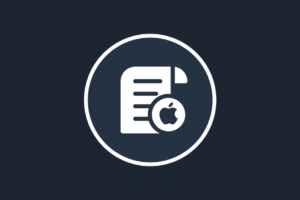The most distinctive soft skill among occupations with the highest AI talent share is design thinking — a systematic approach to problem-solving that centers the user or customer. That’s especially important when building new AI tools, which need to be as intuitive and frictionless as possible for non-technical users.
Operations management, also called operational excellence, is a framework for continuous process improvement in businesses and organizations, related to lean and agile principles. As new advances in AI are already rewriting business models, understanding how to manage change and drive efficiency can give AI professionals helpful perspectives on how their technology applies to real-world organizations.
Interestingly, communication ethics also made it into the top 10 people skills for AI talent. While AI drives a ton of excitement, it also involves risk and requires careful ethical considerations. Being able to clearly articulate and navigate these issues is an invaluable skill for AI professionals.
Final thoughts
The rise of AI has brought about a paradigm shift in the talent landscape. As this data suggests, technical prowess alone is not sufficient for professionals developing AI skills. They also need to excel in a range of soft skills, from design thinking to communication ethics.
For talent professionals, this means that when hiring AI talent, it’s essential to look beyond technical qualifications. Evaluating candidates for these soft skills can help you find well-rounded professionals who can not only develop AI technologies, but also effectively collaborate, problem-solve, and navigate ethical considerations.
For learning and development professionals, these insights underscore the importance of a holistic approach to developing AI talent. While technical training remains crucial, incorporating these soft skills into your learning programs can equip your AI professionals with the comprehensive skill set they need to thrive in this rapidly evolving field.
As AI continues to reshape the professional landscape, the definition of “AI talent” is expanding, with non-technical professionals increasingly harnessing the power of AI. This underscores the growing importance of AI literacy across the majority of roles and industries. As we move forward, fostering a blend of technical acumen and soft skills will be key to nurturing the AI talent of the future.
Methodology
AI talent share data ranges from December 2022 to December 2023. In calculating the global increase in AI talent share, AI talent was defined as members who have added at least two AI skills on their LinkedIn profile or have been previously employed in one of the top 50 AI occupations; the later condition includes members who have gained AI skills but may not have explicitly added AI skills on their LinkedIn profile. The AI talent share is the proportion of AI Talent over the total number of members on LinkedIn.
The analysis of nontechnical workers taking LinkedIn Learning classes on AI literacy ranges from June 2023 to December 2023. Nontechnical functions exclude engineering, information technology, research, education, and business development. The latter two functions are excluded because it captures teachers, professors, founders, CEOs, etc.
Top people skills among AI talent is defined as those soft skills that have the highest odds of appearing in occupations with high AI skills. The AI talent share is calculated for a given occupation, and the occupations are then flagged as either being in the top or bottom quartile based on the AI talent share. The skills associated with the employees in a given occupation are identified, and the average share of employees for a given skill is calculated. Lastly, the odds ratio is calculated by dividing the average share of employees with a skill in the top quartile vs. the bottom quartile. The final output contains only the top 10 soft skills for this analysis and excludes AI and other hard skills. Only skills developed by members up to December 1, 2023, were considered.










